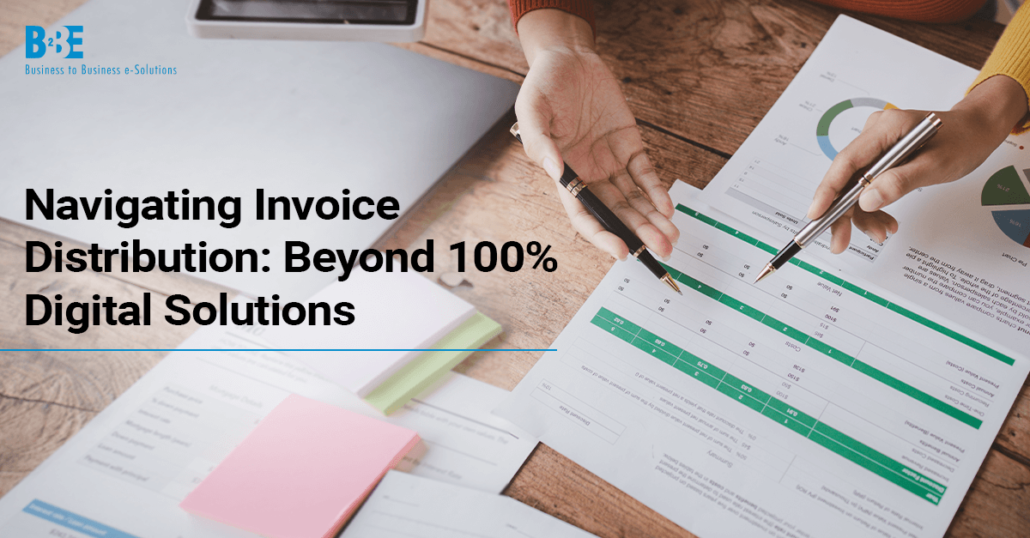In today’s digital era, the push towards complete digitalisation is stronger than ever. Businesses are encouraged to embrace digital transformation, and many believe that a 100% digital solution is the ultimate goal. However, when it comes to invoice distribution, an entirely digital approach may not always be the best option.
The Complexity of Business Environments
Businesses operate in diverse environments with varying levels of technological adoption. While some customers are fully equipped to handle digital invoices, others may still rely on traditional methods. This diversity necessitates a flexible approach to invoice distribution.
Digital Solutions for Invoice Distribution: Benefits and Limitations
Digital invoicing offers numerous benefits. It speeds up the invoicing process, reduces paper waste, and provides real-time tracking. Electronic Data Interchange (EDI) and email invoicing are examples of efficient digital methods that streamline operations.
However, not all customers are ready or willing to transition to digital invoicing. Some may lack the technical infrastructure, while others might have stringent internal policies that favour traditional methods. Relying solely on digital solutions could alienate these customers and delay payments.
The Role of Traditional Methods
Print and post remain relevant in today’s business landscape. Physical invoices can be crucial for customers who prefer tangible documents for record-keeping or are in regions with unreliable internet access. Moreover, some sectors, like construction or manufacturing, often deal with partners who still favour hard copy invoices.
Faxing, albeit seen as outdated, still holds value as an invoice distribution method in industries where security and immediate delivery are paramount. It’s also beneficial for international transactions in regions where email or EDI adoption is low.
下面请观看我们的视频综述:
Hybrid Solutions for Invoice Distribution: The Best of Both Worlds
A hybrid approach to invoice distribution combines the strengths of both digital and traditional methods. By offering multiple invoicing options—EDI, email, print, and fax—businesses can cater to the preferences of all their customers, ensuring timely and accurate delivery of invoices.
This flexibility not only improves customer satisfaction but also enhances cash flow. When customers receive invoices in their preferred format, they are more likely to process payments promptly, reducing the collection period and improving the business’ financial health.
Case for Flexibility
Consider a scenario where a company exclusively uses digital invoicing. Customers without the necessary digital infrastructure might experience delays, leading to extended payment cycles. By contrast, a flexible approach that includes print and post options ensures that all customers, regardless of their technological capabilities, receive invoices promptly.
Conclusion: The Balanced Approach
While digital invoicing is efficient and modern, it’s not a one-size-fits-all solution. Businesses must recognise the importance of flexibility in invoice distribution. By adopting a managed service like B2BE’s Managed Customer Invoice Distribution solution, companies can offer their customers a choice in how they receive invoices—via Email, EDI, or Print and Post. This ensures timely delivery, enhanced security, and improved cash flow, allowing businesses to focus on their core operations while leaving the complexity of invoice distribution to the experts.
About B2BE
B2BE delivers electronic supply chain solutions globally, helping organisations to better manage their supply chain processes, providing greater levels of visibility, auditability and control. We’re driven by a passion for what we do, inspired by innovation, and underpinned by a wealth of knowledge. With over 20+ years of experience, the B2BE teams operate worldwide.
欲了解更多信息,请访问www.b2be.com。

